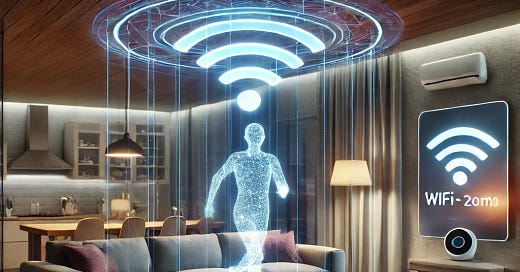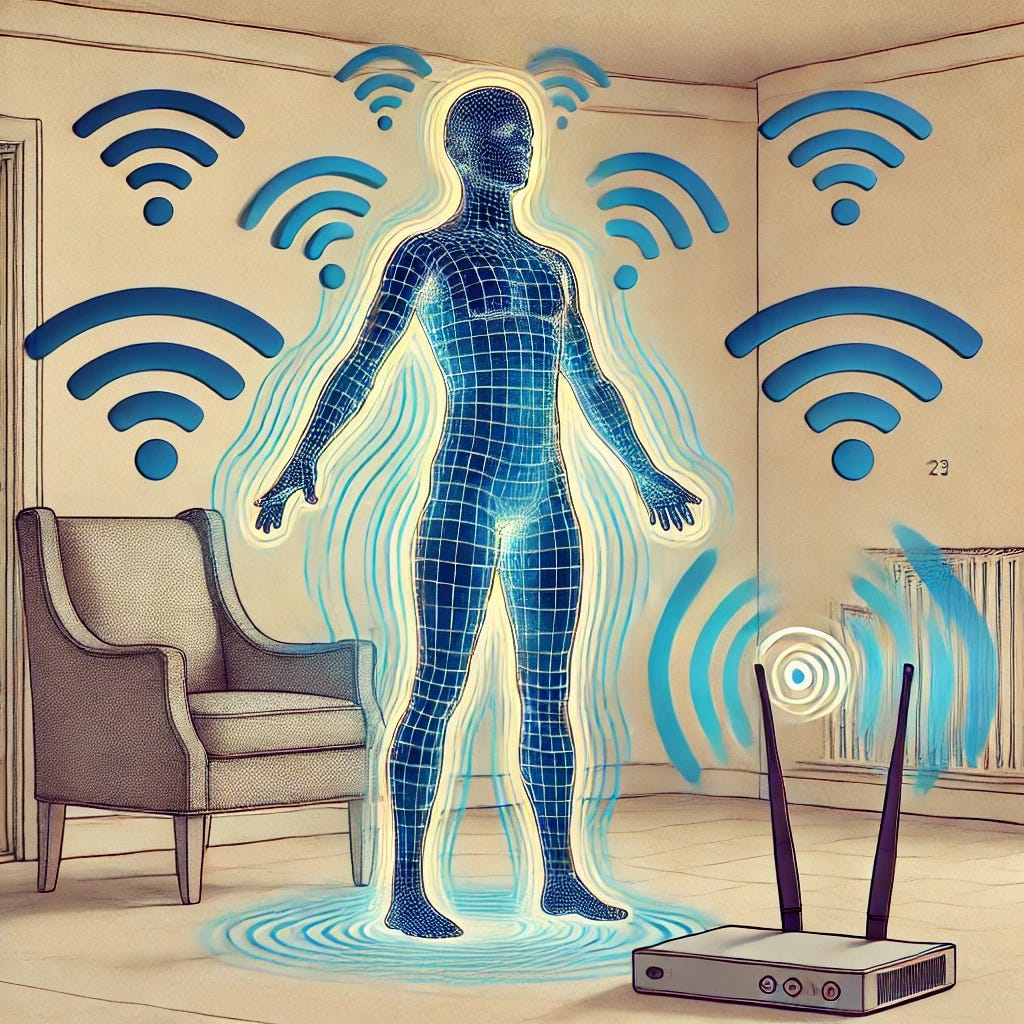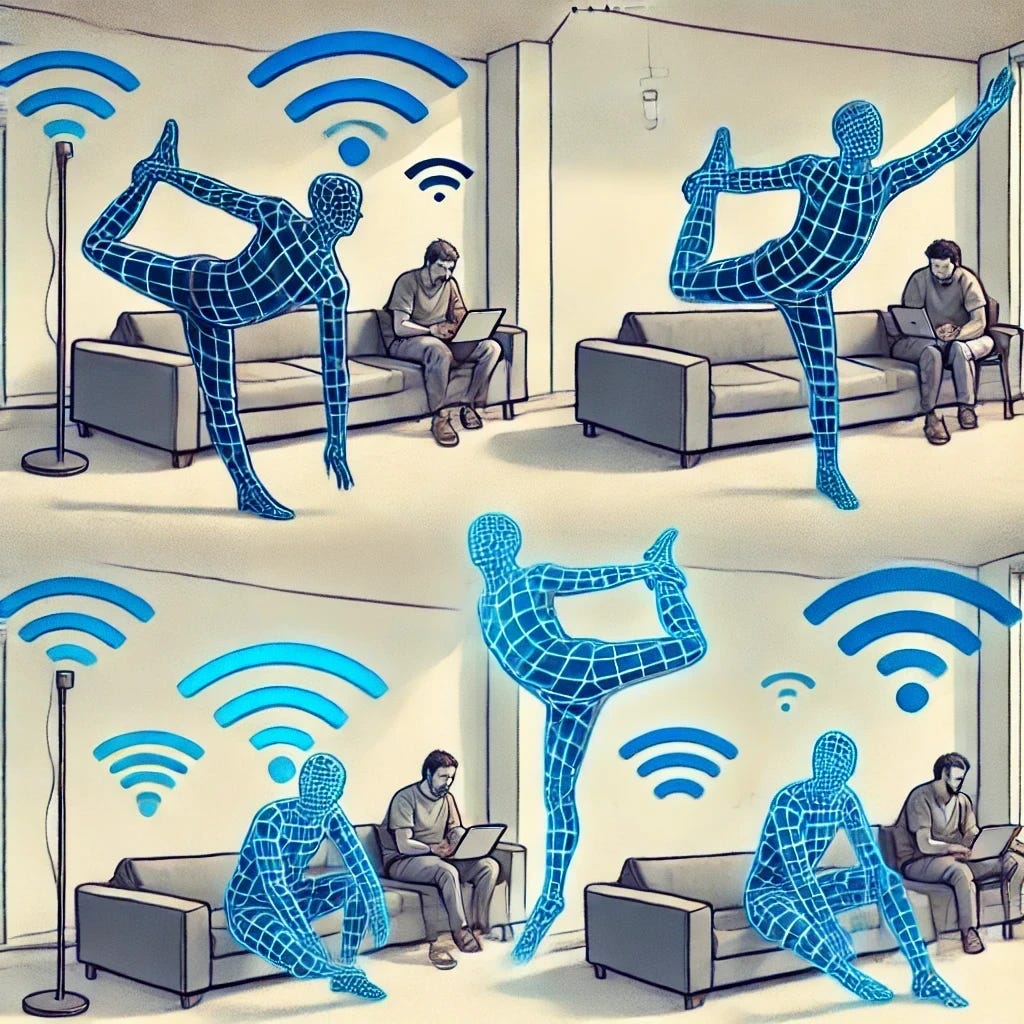Ah, WiFi. It was supposed to be a simple means to binge-watch Netflix and argue with strangers on Blue Sky. But no—scientists at Carnegie Mellon University have found a way to use WiFi signals to estimate human body poses without cameras. Yes, you read that right. Your WiFi router can now see you. Welcome to the future, where even your internet connection is judging your bad posture.
So, let’s dive into the paper DensePose From WiFi by Jiaqi Geng, Dong Huang, and Fernando De la Torre, which basically turns a WiFi signal into an all-seeing, all-knowing body-tracking machine. What could possibly go wrong?
The Big Idea: WiFi Is Watching (But Not In A Creepy Way… Maybe)
Traditionally, if you wanted to estimate a person’s pose—like where their arms, legs, and head are in a room—you’d need fancy tech: cameras, LiDAR, radars, or infrared sensors. The problem? Those are expensive, require good lighting, and, oh yeah, people don’t really like having cameras installed in their homes (insert Black Mirror episode here).
This study proposes an alternative: use WiFi signals instead. The researchers developed a deep learning model that takes WiFi signal distortions (caused by your body moving) and translates them into dense human pose estimations. Essentially, your router can now figure out if you're dabbing or doing yoga just by how the signals bounce off you.
How It Works: The Science-y Stuff in Simple Terms
Step 1: Turning WiFi Into a Body Scanner
WiFi signals interact with objects in a room, including you.
When you move, you disrupt the WiFi signal, causing tiny changes in phase and amplitude.
These disruptions are called Channel State Information (CSI), essentially the WiFi router’s way of saying, "Hey, something’s moving over there!"
Step 2: Teaching a Neural Network to Decode CSI
The researchers trained a deep neural network to map these WiFi signal distortions to UV coordinates of human body parts.
Instead of using a camera image, the model interprets the WiFi data like a visual representation and estimates where body parts are.
Step 3: Making WiFi Smarter with AI
The study uses a modified version of DensePose-RCNN, a computer vision model originally designed to estimate human poses from images.
By tweaking this model and training it with both image-based and Wi-Fi-based data, they were able to predict human poses even when using only Wi-Fi signals.
What’s the Catch?
While this is all mind-blowingly cool, the system isn’t perfect. Here are some key limitations:
It’s Not as Good as a Camera Yet
The model still struggles with fine details, like hands and feet.
It’s great at detecting the general position of your body, but don’t expect it to replace motion-capture suits in Hollywood.
Layout Sensitivity
If you rearrange your furniture or move your router, the performance drops. Your WiFi needs to "learn" the new layout.
Three’s a Crowd
If too many people are in the room, the WiFi signals get too chaotic, making it harder for the model to differentiate between individuals.
Rare Pose Confusion
The system gets thrown off by unusual poses (so if you’re breakdancing or trying to summon demons in your living room, WiFi-DensePose might get confused).
Why This Is a Big Deal
Even with its flaws, this technology has enormous potential:
Privacy-Friendly Monitoring:
Unlike cameras, WiFi signals don’t capture images, which could be used for elderly care or home security without invading privacy.
Low-Cost Alternative:
Setting up a body-tracking system typically requires expensive cameras or LiDAR sensors. This method works with off-the-shelf WiFi routers.
Works in the Dark:
Unlike cameras that need light, WiFi doesn’t care if you’re in pitch-black conditions. Bad news for ghosts, great news for tech.
Final Thoughts: Should You Be Worried?
So, should you start wearing a tinfoil suit to block your router’s nosy signals? Not yet. This research is still in its early stages, and right now, it’s mainly aimed at applications like home automation, security, and healthcare. That said, we all know how these things go—one minute, tech is being developed to help elderly people avoid falls, and the next thing you know, it’s being used in shopping malls to track how long you stand in front of a sale sign.
In the meantime, if your WiFi starts acting too smart—maybe it’s because it’s watching you.
Sleep tight!






